Solving the submerged secrets of the Mary Rose
Thu, 11 Oct 2012 15:15:00 BST
University harnesses modern technology to understand Tudor weaponry and ammunition
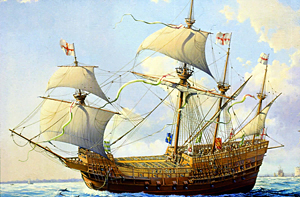
THIRTY years ago – on 11 October 1982 – the Tudor warship Mary Rose was dramatically raised to the surface, more than four centuries after she sank accidentally during an engagement with the French fleet in 1545. But after three decades of research into the ship and its contents, there is still much that can be learned, especially by the application of new technology, and this is exactly what is happening at the University of Huddersfield, in collaboration with The Mary Rose Trust.
The University is home both to the International Institute for Accelerator Applications and an Arms and Armour Research Group. Their combined expertise is leading to new discoveries about the weaponry and ammunition on board the Henry VIII’s flagship.
Many of the early projectiles for the small guns found on the Mary Rose are unlike anything used in later centuries. They are made of lead but almost all of them have a lump of iron in the centre. Specialists have long argued as to why they were made this way.
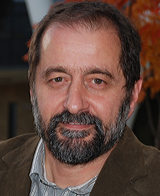
Was it simply for cheapness, to save on expensive lead? Did the projectiles have special ballistic properties that, in some way, made them more effective when fired? Or did the gunner just want to make the rounds lighter to reduce the pressures and so avoid the early guns exploding?
“There are many different suggestions,” says the leading battlefield archeologist Dr Glenn Foard (pictured), of the University of Huddersfield.
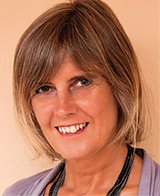
“But until we know exactly what is inside – how big, what shape and what material it is made from – we won’t be able to answer the question. Although X-ray radiography was used to show differences in the density of different metals, understanding the structure and form of what lay within the shot could only be confirmed by sectioning several of the projectiles – but we couldn’t go around destroying such a unique collection!”
However, researchers from the Arms and Armour Research Group and the Institute for Accelerator Applications at the University of Huddersfield have now been able to apply advanced neutron techniques to answer these questions without cutting open the shot.
The experimental team, led by Professor Sue Kilcoyne (pictured), used neutron radiography and neutron tomography at the Paul Scherrer Institute in Switzerland to carry out a non-destructive analysis of the internal structure of 20 round shot.
The pictures below show (a) a radiography image of a 1kg lead cannon ball and (b) a 3D neutron tomograph of similar shot. In both images the cubic iron inclusion is clearly visible within the lead sphere. However the second image can be rotated, and the lead and the cube examined from all angles.
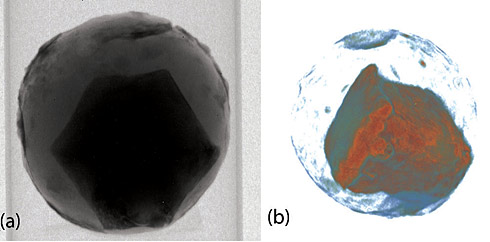
These, and further neutron measurements will enable the team to quantify the dimensions and detailed composition of the shot and inclusions and ultimately allow them to determine the significance of such a construction in terms of cost, ballistic properties or weight.
Alexzandra Hildred from The Mary Rose Trust said: “The battle of the Solent in 1545 resulting in the loss of the Mary Rose, has provided us with a ship and armaments and a huge number of projectiles – over 1,600 round shot and 2,500 complete arrows – from a period of great change in warfare both at sea and on land.
“This sort of combined research project, with the University of Huddersfield, demonstrates how the underwater resource can be integrated into the study of battlefield archaeology and increase our understanding of the warfare at this pivotal time. It provides us with far more detailed information on our artefacts than we have been able to obtain so far."
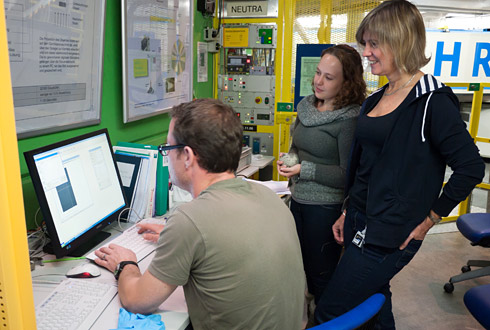
Professor Sue Kilcoyne (far right) and PhD student Amanda Wynne (centre) are pictured at the Paul Scherrer Institute with SINQ Instrument Scientist Jan Hovind.
- Acknowledgements:
- Alexzandra Hildred (The Mary Rose Trust)
- Glenn Foard and Amanda Wynne (Arms and Armour Research Group, University of Huddersfield)
- Sue Kilcoyne and Bob Cywinski (International Institute for Accelerator Applications, University of Huddersfield)
- Jan Hovind, Anders Kaestner (Paul Scherrer Institute)







